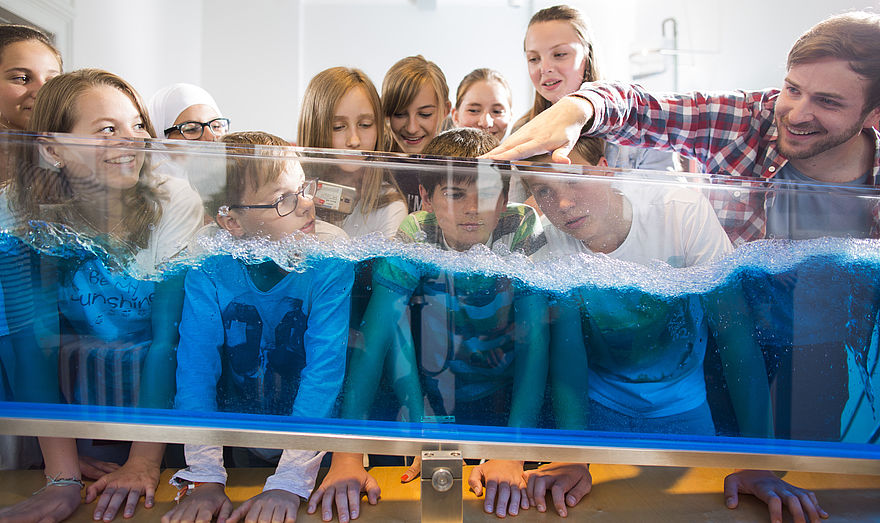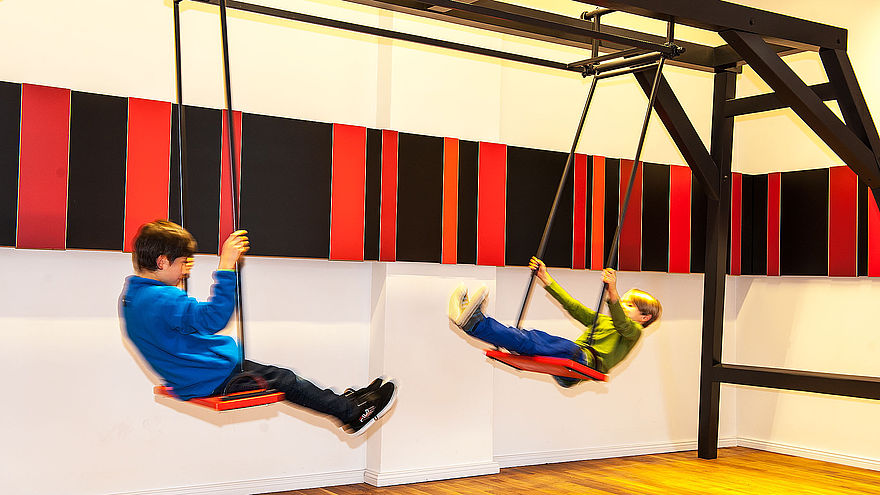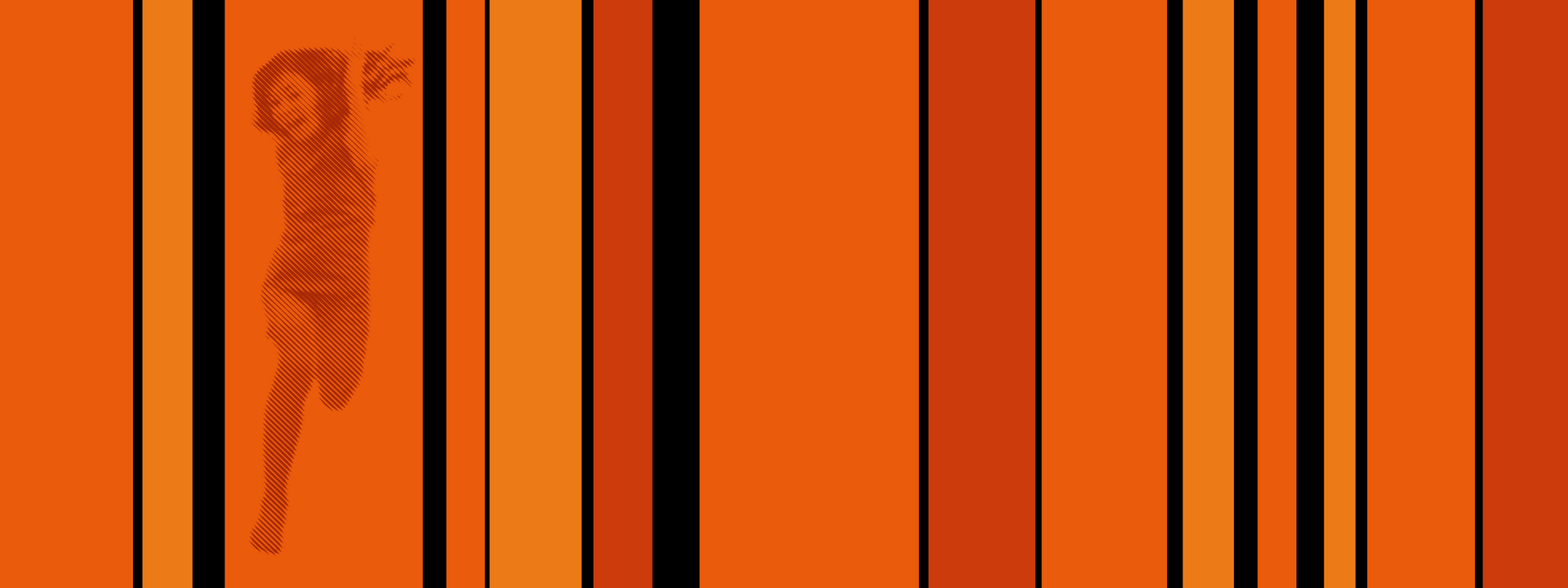Motion and the Development of Science
In the “Mechanics and Motion” section, there are seesaws, swings, and pendulums you can use to explore the fundamentals of physics – or just to have a lot of fun.

visitBerlin, Foto: Dirk Mathesius
Motion
The natural sciences progressed from around 400 B.C. to the mid-17th century thanks in large part to precise observations of motion. Very early on, it was known how things moved. Why things moved the way they did, however, long remained a mystery.

SDTB / C. Kirchner
Mechanics
English physicist and mathematician Isaac Newton (1642-1727) was the first to provide a coherent explanation for why things move the way they do. He formulated generally valid laws about gravitation and motion. Newton thus became the founder of what is called classical mechanics.
Did you know? According to legend, Newton arrived at his breakthrough idea while sitting under an apple tree and watching a ripe apple fall to the ground.

